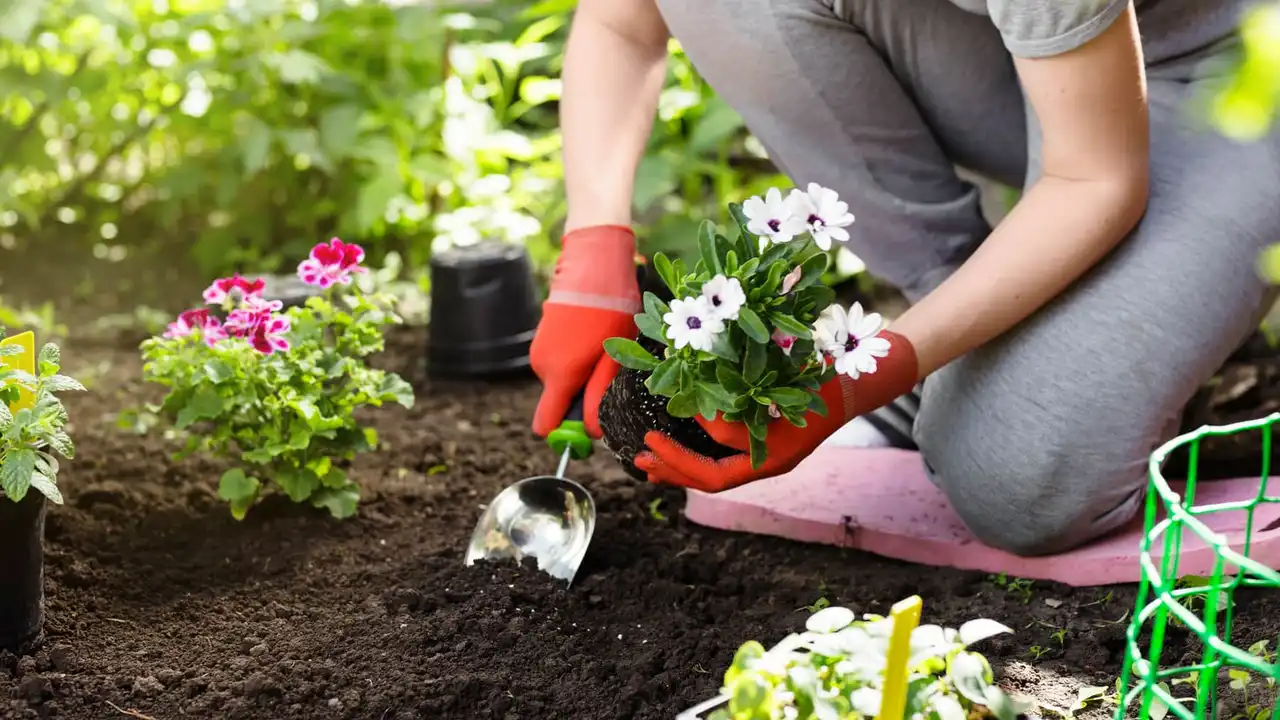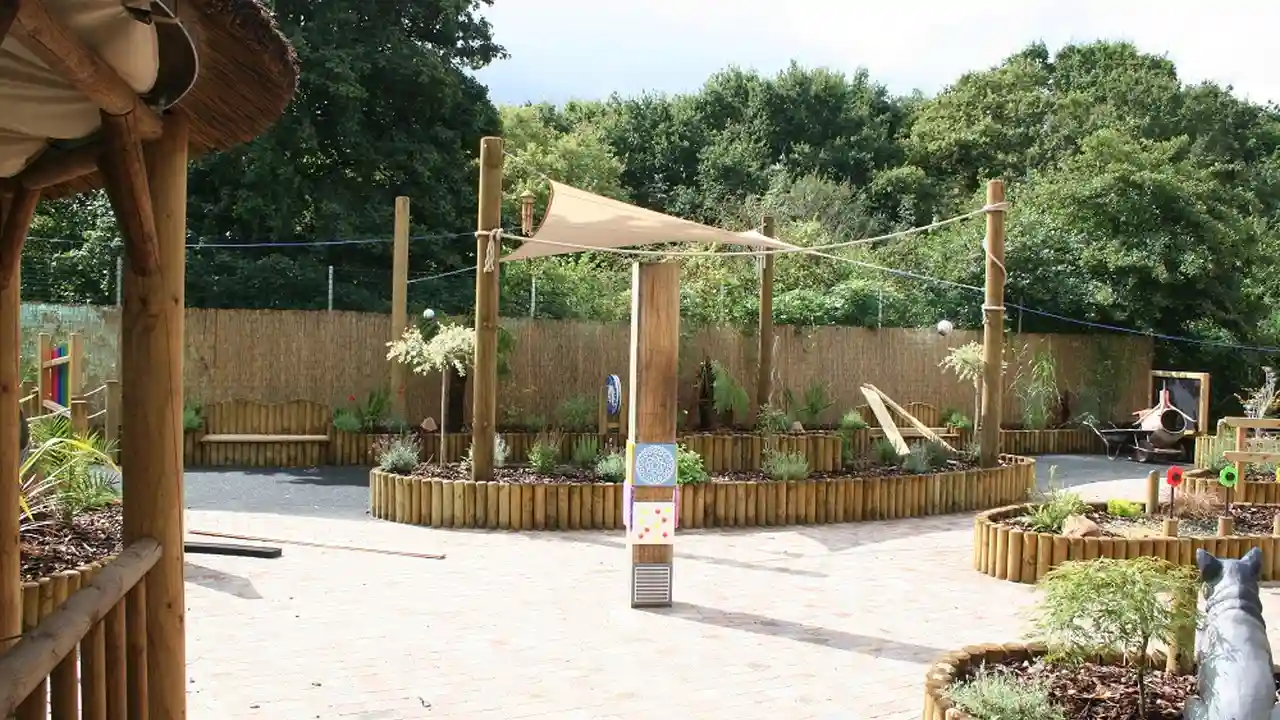Gardening with Kids 7 Fun Activities
Engage children in gardening with these 7 fun and educational activities. Foster a love for nature and growing.

Engage children in gardening with these 7 fun and educational activities. Foster a love for nature and growing.
Gardening with Kids 7 Fun Activities
Gardening is more than just planting seeds and watering plants; it's an incredible opportunity to connect with nature, learn about life cycles, and develop patience and responsibility. For kids, it can be a magical adventure, a hands-on science lesson, and a source of immense pride. Getting children involved in gardening from a young age can instill a lifelong love for the outdoors and an understanding of where their food comes from. It’s also a fantastic way to spend quality time together as a family, creating lasting memories.
Many parents wonder how to make gardening appealing and accessible for their little ones. The key is to make it fun, engaging, and age-appropriate. Forget about perfection; embrace the mess, the learning, and the joy of discovery. This guide will walk you through seven fantastic activities that are sure to spark your child's interest in gardening, along with practical tips and product recommendations to make the experience even better.
Activity 1 Seed Starting Adventures Indoor Gardening for Kids
Starting seeds indoors is a wonderful way to introduce children to the magic of germination. It’s a relatively clean activity that can be done at a kitchen table, making it accessible even on rainy days. Kids love watching tiny sprouts emerge from the soil, and it teaches them about the beginning of a plant's life cycle.
Why Seed Starting is Great for Kids
- Observation Skills: Children can observe the entire process from seed to seedling.
- Patience: It teaches them that good things take time.
- Responsibility: They learn to care for something living.
- Early Success: Many seeds germinate quickly, providing fast gratification.
How to Do It
Choose fast-growing seeds like radishes, beans, peas, or sunflowers. Provide small pots or seed trays, good quality seed-starting mix, and a watering can. Let the kids fill the pots, poke holes, drop in seeds, and gently cover them. Place them in a sunny window and water regularly.
Recommended Products for Seed Starting
To make seed starting easy and fun, consider these products:
- Jiffy Peat Pellets (50-count): These are fantastic for kids because they expand when watered, which is a cool visual. They are self-contained, reducing mess. You can find a 50-count pack for around $10-$15. They are great for starting a variety of seeds, especially larger ones like beans or squash.
- Burpee Seed Starting Kit with Greenhouse Dome: This kit often includes a tray, cell inserts, and a clear dome, creating a mini-greenhouse effect. It’s perfect for maintaining humidity and warmth. A typical kit costs about $20-$30 and is ideal for starting multiple types of seeds simultaneously.
- Kids' Gardening Tool Set (with small trowel and rake): While not strictly for seed starting, having their own small, sturdy tools makes kids feel like real gardeners. Look for sets made from durable plastic or metal with rounded edges. Prices range from $15-$25.
Activity 2 Creating a Pizza Garden Edible Gardening Fun
What kid doesn't love pizza? A pizza garden is a themed garden bed where you grow all the ingredients for a delicious homemade pizza. This activity connects gardening directly to food, making it incredibly tangible and exciting for children.
Why a Pizza Garden is Great for Kids
- Food Connection: They see where their food comes from.
- Healthy Eating: Encourages trying new vegetables and herbs.
- Themed Learning: Makes gardening a fun project with a clear goal.
How to Do It
Designate a circular or square patch in your garden. Plant tomatoes (for sauce), basil, oregano, bell peppers, and onions. You can even add a border of wheatgrass for the 'crust' effect. Let kids help with planting, watering, and harvesting. The ultimate reward is making and eating a pizza with their homegrown ingredients!
Recommended Products for a Pizza Garden
- Bonnie Plants Live Tomato Plants (Cherry or Roma varieties): Buying small live plants rather than seeds gives quicker results, which is great for impatient kids. Cherry tomatoes are particularly fun for snacking. Prices vary by region and season, typically $4-$7 per plant.
- Herb Seed Collection (Basil, Oregano, Thyme): A small packet of herb seeds is inexpensive (around $3-$5 per packet) and allows kids to plant multiple herbs. Look for organic or non-GMO options.
- Kids' Watering Can (lightweight and easy to pour): A watering can designed for small hands prevents spills and makes watering a fun chore. Look for plastic ones with a comfortable handle, usually $10-$20.
Activity 3 Fairy Gardens and Miniature Worlds Imaginative Play in the Garden
Fairy gardens are miniature landscapes designed to attract fairies (or simply spark imagination!). This activity combines gardening with creative play, allowing children to design and build their own tiny worlds using plants, pebbles, and small figurines.
Why Fairy Gardens are Great for Kids
- Creativity: Encourages imaginative design and storytelling.
- Fine Motor Skills: Arranging small items helps develop dexterity.
- Plant Care: They learn to care for small, delicate plants.
How to Do It
Find a large pot, an old wagon, or a designated spot in the garden. Use small, slow-growing plants like succulents, moss, or miniature ferns. Add pebbles for paths, small sticks for fences, and miniature furniture or figurines. Let your child lead the design process.
Recommended Products for Fairy Gardens
- Succulent Assortment Pack (e.g., 12-pack of small succulents): Succulents are low-maintenance and come in various shapes and colors, perfect for miniature landscapes. A 12-pack can cost $20-$30 online or at garden centers. They are very forgiving if kids forget to water them occasionally.
- Miniature Fairy Garden Accessories Kit: These kits often include tiny benches, houses, animals, and bridges. They can range from $15-$40 depending on the number and quality of pieces. They instantly add charm and a story element to the garden.
- Decorative Pebbles and Colored Gravel (small bags): These are great for creating paths, rivers, or decorative elements. A 5-pound bag can cost $5-$10 and comes in various colors.
Activity 4 Painting Garden Rocks and Markers Artistic Expression Outdoors
This activity combines art with gardening. Kids can paint rocks to decorate the garden or create personalized plant markers. It’s a simple, low-cost activity that adds a personal touch to your garden space.
Why Painting Rocks is Great for Kids
- Artistic Expression: Allows for creativity and personalization.
- Fine Motor Skills: Painting helps develop hand-eye coordination.
- Garden Decoration: Adds color and personality to the garden.
How to Do It
Gather smooth, flat rocks from your yard or a craft store. Provide outdoor-friendly acrylic paints and brushes. Kids can paint designs, ladybugs, or write the names of plants on the rocks to use as markers. Seal them with a clear coat to protect them from the elements.
Recommended Products for Rock Painting
- Outdoor Acrylic Paint Set (multi-color pack): Look for paints specifically designed for outdoor use or that are water-resistant once dry. A set of 12-24 colors can cost $15-$25.
- Smooth River Rocks (bagged for crafting): While you can find rocks outside, buying a bag ensures smooth, clean surfaces ready for painting. A 10-pound bag might be $10-$15.
- Clear Outdoor Sealer Spray (e.g., Rust-Oleum Clear Gloss): This is crucial for protecting the painted rocks from rain and sun. A can costs around $8-$12.
Activity 5 Building a Bug Hotel or Bee House Supporting Garden Ecosystems
This activity teaches children about the importance of beneficial insects and biodiversity. Building a bug hotel or bee house provides shelter for pollinators and pest controllers, making your garden a healthier place.
Why Building Bug Houses is Great for Kids
- Environmental Awareness: Teaches about ecosystems and beneficial insects.
- Construction Skills: Involves simple building and design.
- Observation: Kids can observe insects using their hotel.
How to Do It
For a simple bug hotel, use an old wooden box or pallet. Fill compartments with natural materials like hollow bamboo canes, pinecones, straw, and drilled logs. For a bee house, use a small wooden block with holes drilled to specific sizes for solitary bees. Place it in a sheltered spot in the garden.
Recommended Products for Bug Houses
- Pre-made Bee House Kit (DIY assembly): Many kits are available that come with pre-drilled wood blocks or bamboo tubes, making assembly easy for kids with adult supervision. Prices range from $20-$40.
- Bamboo Canes (small bundle): These are excellent for creating tunnels for solitary bees. A bundle can be purchased for $5-$10.
- Small Wooden Pallet or Untreated Wood Scraps: Check local hardware stores or lumber yards for free or inexpensive scraps.
Activity 6 Planting a Rainbow Garden Learning Colors with Flowers
A rainbow garden is a visually stunning project that teaches children about colors and plant varieties. You plant flowers or vegetables in distinct color sections, creating a living rainbow.
Why a Rainbow Garden is Great for Kids
- Color Recognition: Reinforces learning colors in a fun, natural setting.
- Plant Identification: Helps them distinguish different plant types.
- Visual Appeal: Creates a beautiful and engaging garden space.
How to Do It
Choose a sunny spot and divide it into sections. Select plants that bloom in specific colors: red (geraniums, petunias), orange (marigolds, nasturtiums), yellow (sunflowers, zinnias), green (leafy greens, herbs), blue (delphiniums, cornflowers), and purple (lavender, salvia). Let kids help choose the plants and arrange them by color.
Recommended Products for a Rainbow Garden
- Flower Seed Mixes by Color (e.g., 'Red Flower Mix', 'Blue Flower Mix'): Many seed companies offer mixes specifically designed to produce flowers of a single color. This simplifies planning. Individual packets are usually $2-$4.
- Live Annuals (e.g., Marigolds, Petunias, Zinnias): Buying small annual plants from a nursery provides instant color and quicker gratification. They typically cost $3-$6 per six-pack.
- Garden Markers (colorful plastic or wooden sticks): Use these to label each color section, reinforcing the learning. A pack of 20 can be $5-$10.
Activity 7 Worm Composting Bin Understanding Decomposition
While it might sound a bit messy, a worm composting bin (vermicomposting) is a fascinating way to teach kids about decomposition, nutrient cycling, and waste reduction. It’s a living science experiment!
Why Worm Composting is Great for Kids
- Science Education: Teaches about ecosystems, decomposition, and soil health.
- Waste Reduction: Shows how food scraps can be repurposed.
- Responsibility: Caring for the worms instills a sense of duty.
How to Do It
You’ll need a worm bin (can be store-bought or DIY from plastic containers), bedding material (shredded newspaper, cardboard), and red wiggler worms. Add food scraps like fruit and vegetable peels, coffee grounds, and eggshells. Kids can help feed the worms and observe the transformation of waste into nutrient-rich compost.
Recommended Products for Worm Composting
- Worm Factory 360 Composter: This is a popular multi-tray system that makes harvesting compost easy. It’s a larger investment, around $100-$150, but very durable and efficient for a family.
- Red Wiggler Worms (1 lb starter pack): You can order these online from reputable suppliers. A pound of worms (about 1000 worms) costs around $30-$40.
- DIY Worm Bin Materials: Two opaque plastic storage bins (one with holes drilled in the bottom), shredded newspaper, and a spray bottle for moisture. This is a very low-cost option, perhaps $15-$25 for the bins.
Gardening with kids is an enriching experience that goes beyond just growing plants. It’s about nurturing curiosity, fostering responsibility, and creating a deeper connection to the natural world. By making these activities fun and hands-on, you’re not just growing a garden; you’re growing a love for learning and the environment in your children. So, grab some tools, get a little dirty, and enjoy the incredible journey of gardening together!
:max_bytes(150000):strip_icc()/277019-baked-pork-chops-with-cream-of-mushroom-soup-DDMFS-beauty-4x3-BG-7505-5762b731cf30447d9cbbbbbf387beafa.jpg)






